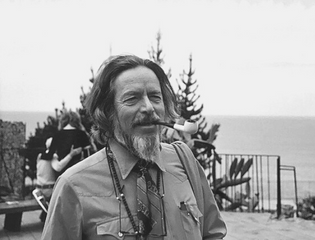Human Potential Movement
Table of Contents


The 1960s saw a boom in movements purporting to combine Eastern philosophy with Western psychology. One of these is the Human Potential Movement, a humanistic psychology movement with an eye toward Eastern mysticism.
Like many psychologically-oriented groups of the 1960s, the Human Potential Movement combines New Age ideas and Western psychology. Self-improvement oriented, it sees people as an unverifiable portion of “potential” that is more or less unlimited.
People are unhappy, claims the Human Potential Movement, because they haven’t fulfilled their potential.
A Short-sighted View of Human Potential
If you’ve ever had someone explain to you how humans only use “10 percent of the brain” or something similar, you were hearing Human Potential Movement talking points. The Human Potential Movement borrows from Buddhism the idea of “liberating” oneself from the constraints of society and the physical body.
The Human Potential Movement was likewise influenced by the burgeoning psychedelic culture of the time, which held similar Rousseauean views regarding man in a state of nature and the importance of liberating oneself from social convention.
Though “human potential” only includes the good things that humans do. Human potential, for example, does not include the death camp or even the con artist. This is due to Abraham Maslow’s work, which eschewed a pathological treatment model of mental health in favor of one aimed at “self-actualization.”
Self-actualization is continued personal success (by one’s own definition), and was the primary goal. It was to be obtained through “peak experiences,” things like religious rites and psychedelic drug trips, among others. A peak experience could also be obtained through group therapy sessions.
The Human Potential Movement has been accused of hive thinking, brittle resistance to criticism, undue reverence for its leaders, and inability to adapt to changing circumstances — a cult, in other words. Leading figures in the Human Potential Movement include Abraham Maslow (who later broke from the movement), Bhagwan Shree Rajneesh (Osho), Michael Murphy (co-founder of the Esalen Institute), and Aldous Huxley (who also later broke from the movement).
A study on the movement by social analyst Geoffrey Hill, found that the “potential” it produced was mostly selfishness and immaturity. The Human Potential Movement allowed for an easy pivot from Baby Boomer pretenses of fighting the system into outstanding achievement in the corporate sphere.
Nathaniel Branden, an Ayn Rand protégé, on Bhagwan Shree Rajneesh (Osho), stated that “The greater a man’s brilliance, the greater number of truths he has insight to, the more dangerously destructive that man has the power to be — if his core is evil.”
The Danger of Viewing Human Perfection as a Possibility
The philosophy is one that ultimately lends itself to a specific view of the world: One of human perfectibility. The scientific breakthroughs of the mid-20th Century caused many to look for a way to use science, rather than religion, to perfect mankind. Others combined the two. But the notion of a world that can be perfected drove both.
This is the fatal pitfall of many otherwise well-intentioned efforts to subjectively improve man: a lack of understanding of man’s dual nature as sinner and saint.
A healthy and truly complete understanding of human existence and “potential” understands that human beings can be as kind and generous as they can be predatory, exploitative and, indeed, evil.
Psychedelics & Mysticism Quotes: The Effect Psychedelics Can Have
One of the more controversial topics in the world of self-actualization is the use of psychedelics. So do you need a psychedelic experience to begin overcoming the self? No, but…